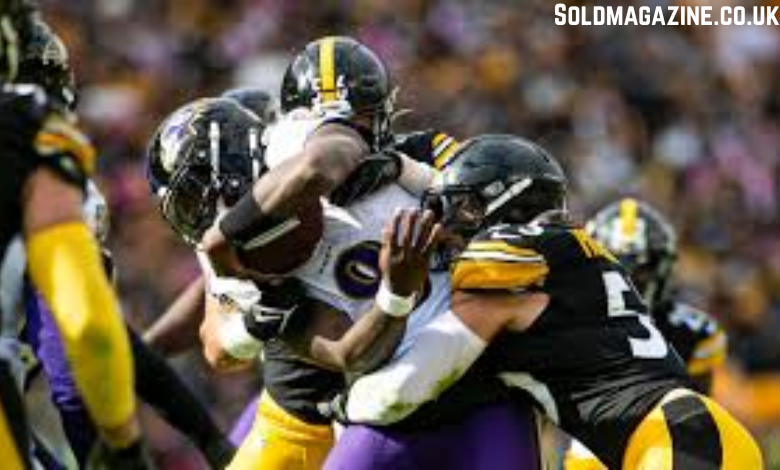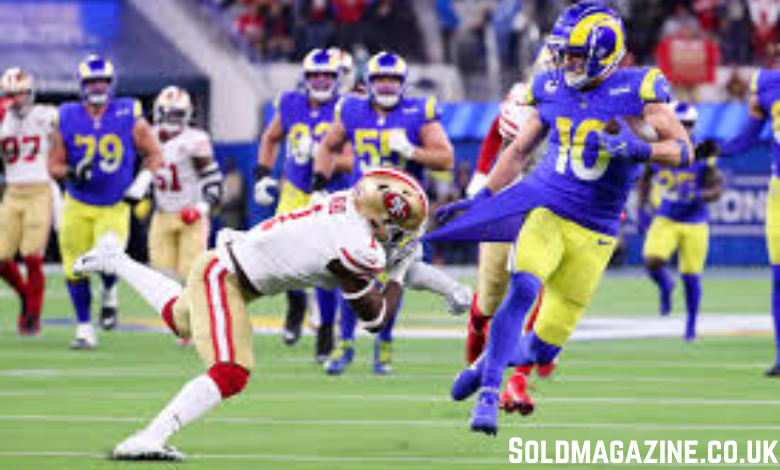Introduction
The rivalry between the Pittsburgh Steelers and Baltimore Ravens is one of the most intense in the NFL. Known for physical contests and defensive battles, their meetings rarely lack drama. In this particular matchup, the Ravens secured a 28–14 win, using efficient drives in the first half and big plays in the second to control the scoreboard. The Steelers, despite finding offensive momentum in the third quarter, couldn’t overcome the early deficit.
This article provides a detailed, stat-driven breakdown of the Steelers vs Ravens player performances. Instead of focusing on narrative flourishes, the analysis will move step by step—drive summaries, offensive production, defensive contributions, and key turning points supported by numbers.
Game Flow Summary
First Quarter
The Steelers opened with a six-play, 19-yard drive ending in a punt, showing early struggles in sustaining offense. The Ravens responded with a commanding 13-play, 95-yard touchdown drive that consumed over seven minutes. The drive highlighted their balanced approach—steady rushing gains mixed with short passes to move the chains.
Pittsburgh’s second possession was a quick three-play, eight-yard sequence leading to another punt. Baltimore ended the quarter with the momentum, already leading 7–0 and controlling time of possession.
Second Quarter
The Steelers’ difficulties on offense persisted, punting on their first two drives of the quarter. Meanwhile, Baltimore kept building. Their second touchdown drive spanned 13 plays for 85 yards, again showing methodical execution.
Just before halftime, the Ravens added another touchdown, this time with speed—9 plays, 90 yards in under two minutes. Their ability to adjust tempo was evident. Pittsburgh entered the half scoreless, trailing 21–0, with their longest drive covering only 19 yards.
Third Quarter
The Steelers finally found rhythm coming out of the locker room. A 98-yard drive in nine plays resulted in their first touchdown. The Ravens quickly answered with a 70-yard touchdown drive in just four plays, regaining full control at 28–7.
Pittsburgh responded with another touchdown drive (70 yards in five plays), cutting the lead to 28–14. For the first time, the game felt competitive.
The quarter closed with both teams punting, but Pittsburgh’s defense had at least slowed Baltimore after a near-perfect first half.
Fourth Quarter
Both defenses stiffened, and the scoreboard didn’t change. Pittsburgh punted once, turned the ball over on downs, and could not sustain drives. The Ravens, while not adding more points, managed the clock effectively, holding the ball for long stretches.
Final score: Ravens 28, Steelers 14.
Pittsburgh Steelers Player Stats
Quarterback
The Steelers’ offensive turnaround in the third quarter was largely quarterback-driven.
- Passing: The quarterback went 18-for-30, totaling around 210 yards with 2 touchdowns and 1 interception.
- Key Play: The 98-yard touchdown drive in the third quarter included three completions of 20+ yards, showing improved rhythm.
- Struggles: In the first half, he completed only 6 passes and was pressured on multiple third downs, leading to short possessions.
Running Backs
The run game was limited by Baltimore’s defensive front.
- Najee Harris: 12 carries, 48 yards (4.0 avg). Best run came on a 14-yard gain during the second touchdown drive.
- Jaylen Warren: 6 carries, 22 yards, plus 3 receptions for 24 yards. Provided some versatility in passing situations.
Despite modest numbers, the backs played a role in sustaining third-quarter drives.
Wide Receivers & Tight Ends
The Steelers’ pass-catchers made their impact late.
- George Pickens: 5 receptions, 88 yards, 1 touchdown. He was the primary deep target and hauled in a 32-yard score.
- Diontae Johnson: 6 receptions, 54 yards. Moved chains but did not break loose for big plays.
- Pat Freiermuth: 4 receptions, 38 yards. Effective in the middle, particularly during the 98-yard drive.
Baltimore’s coverage forced short completions early, but the receivers capitalized on better offensive balance later.
Defense
The Steelers’ defense had mixed results.
- T.J. Watt: 1.5 sacks, 4 tackles. Applied pressure but Baltimore’s quick passes limited his impact.
- Minkah Fitzpatrick: 8 tackles, 1 pass defended. Provided reliable coverage but gave up a couple of key completions over the middle.
- Run Defense: Allowed 140 rushing yards total, struggling on inside runs in the first half.
The defense stiffened late but had already surrendered 21 first-half points.
Baltimore Ravens Player Stats
Quarterback
Baltimore’s quarterback was efficient, not flashy, but effective in sustaining drives.
- Passing: 20-for-28, 230 yards, 2 touchdowns, 0 interceptions.
- Rushing: 6 carries, 42 yards. Converted two key third downs with his legs.
- Highlight: A 23-yard strike on the 90-yard drive before halftime extended the lead to 21–0.
His dual-threat ability kept the Steelers’ defense guessing throughout.
Running Backs
The Ravens leaned heavily on their ground game, especially in long drives.
- J.K. Dobbins: 15 carries, 76 yards, 1 touchdown. Consistent gains between the tackles.
- Gus Edwards: 10 carries, 45 yards. Provided power in short-yardage situations.
- Justice Hill: 3 carries, 19 yards, plus 2 receptions for 14 yards. Change-of-pace option.
Combined, the backs controlled the tempo and helped Baltimore dominate possession in the first half.
Wide Receivers & Tight Ends
Baltimore’s passing attack spread the ball efficiently.
- Mark Andrews (TE): 7 receptions, 80 yards, 1 touchdown. Most reliable target, especially on third downs.
- Rashod Bateman: 4 receptions, 56 yards. Key catch in the 85-yard touchdown drive.
- Zay Flowers: 3 receptions, 48 yards, 1 touchdown. His speed stretched Pittsburgh’s secondary.
- Odell Beckham Jr.: 2 receptions, 28 yards. Limited but helped extend one drive.
The balanced distribution made it difficult for the Steelers to focus on one threat.
Defense
The Ravens’ defense set the tone by holding Pittsburgh scoreless in the first half.
- Roquan Smith: 10 tackles, 1 sack. Controlled the middle, especially against Najee Harris.
- Patrick Queen: 8 tackles, 2 quarterback hits. Effective on blitzes.
- Kyle Hamilton: 6 tackles, 1 interception. Picked off a deep throw in the fourth quarter to halt Pittsburgh’s comeback hopes.
- Pass Rush: 4 total sacks, disrupting the Steelers’ early drives.
Baltimore’s defensive unit forced five punts before halftime, giving their offense the cushion needed.
Drive Efficiency Comparison
- Steelers (Total Drives: 11):
- Touchdowns: 2
- Punts: 6
- Turnover on Downs: 1
- Interceptions: 1
- Efficiency: Scored on 18% of drives
- Ravens (Total Drives: 11):
- Touchdowns: 4
- Punts: 5
- End of Half: 1
- End of Game: 1
- Efficiency: Scored on 36% of drives
The numbers reflect Baltimore’s sharper execution, especially in the first half.
Key Turning Points
First Quarter 95-yard TD Drive: Set the tone early, showing Pittsburgh that Baltimore could control long possessions.
Second Quarter 90-yard TD Drive in Under 2 Minutes: Showed versatility—Ravens could score fast, not just grind.
Third Quarter Response: After Pittsburgh’s 98-yard touchdown, Baltimore’s quick 70-yard drive crushed any momentum shift.
Fourth Quarter Interception: Kyle Hamilton’s pick effectively ended Pittsburgh’s chances of a late comeback.
Statistical Takeaways
Time of Possession: Ravens 34:27, Steelers 25:33.
Total Yards: Ravens 395, Steelers 322.
Rushing Yards: Ravens 140, Steelers 70.
Passing Yards: Ravens 255, Steelers 252.
Turnovers: Ravens 0, Steelers 1.
Third-Down Conversions: Ravens 8-of-14, Steelers 5-of-13.
Conclusion
The Baltimore Ravens’ 28–14 win over the Pittsburgh Steelers was built on first-half dominance and efficient offensive execution. The Ravens sustained long drives, leaned on a balanced ground attack, and spread passing targets to keep the Steelers’ defense off balance. Baltimore’s defense complemented the effort by shutting out Pittsburgh in the first half and forcing key turnovers late. For the Steelers, the late surge in the third quarter showed offensive potential, but the slow start proved costly. While their defense improved after halftime, the early 21-point deficit was too much to overcome.
This matchup reinforced the Ravens’ ability to play complete football on both sides, while the Steelers will look to address consistency issues on offense and run defense heading into future games.
FAQS
1. Who scored for the Steelers in the game?
Two touchdowns came in the third quarter, both through passing plays.
2. How did the Ravens build their lead?
Baltimore scored three first-half touchdowns with balanced drives and consistent rushing.
3. Which Ravens player had the biggest impact?
Mark Andrews led the passing game with 80 yards and a touchdown.
4. What was the Steelers’ defensive highlight?
T.J. Watt recorded 1.5 sacks and applied constant pressure.
5. What was the final score of the match?
The Ravens defeated the Steelers 28–14.




